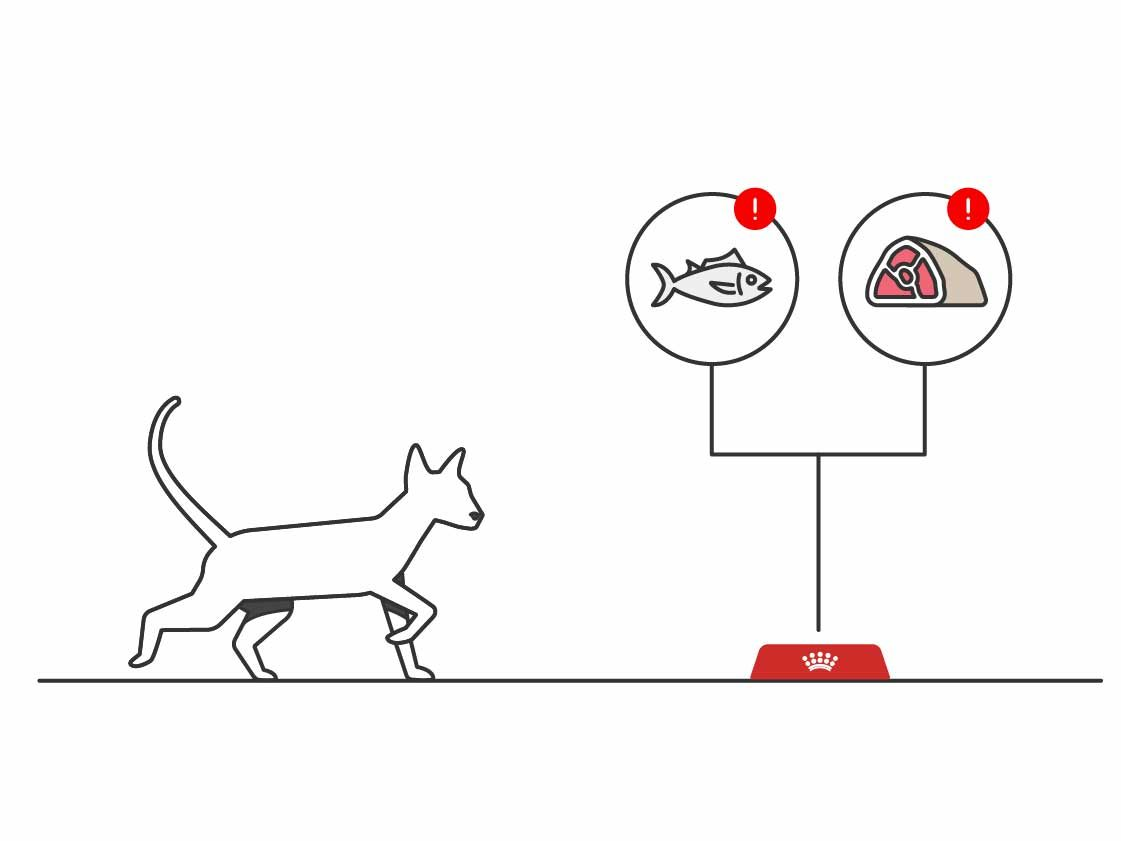Cat skin conditions: Signs, causes and management

Skin and coat problems are two of the most common reasons for a cat to be taken to the vet, accounting for 1 in 5 of all medical veterinary appointments.1
The reason why skin problems are so prominent in cats remains a topic of research, but it’s clear that many health issues can affect a cat’s skin – from endocrine issues to an infestation of parasites.
Cat skin conditions range from mild to severe, but they’re often painful and can easily worsen over time. So, if you notice that your cat has developed a rash, is losing hair, or is constantly scratching, it’s best to take them to the vet for a thorough assessment.
Clinical signs of skin diseases and conditions
The signs will vary depending upon the health issue affecting your cat.
Itchy skin
Constant scratching or excessive licking
Redness or swelling of the skin
Odor
Hair loss
Some health conditions, like allergies, may also lead to gastrointestinal upsets which can cause vomiting and diarrhea.
What causes skin conditions in cats?
The list of conditions that cause skin problems in cats is broad. Common causes include:Food allergies
An allergy occurs when the immune system mistakes a harmless substance for a foreign invader and triggers a reaction. When this happens in a cat, their skin becomes inflamed, and they experience many of the signs highlighted above.Food allergies are a particularly serious type of allergy that occurs in relation to food ingredients, typically protein sources. If you think your cat has a food allergy, you should contact your vet.
If you’d like to know more about food allergy signs, see our article Spotting the Signs of a Cat Food Allergy.

Environmental allergies
Environmental allergies are triggered by airborne substances, such as mold, dust, or pollen. When a cat’s immune system encounters one of these allergens, their skin becomes itchy and inflamed.The condition, known as atopic dermatitis, is thought to represent 25-30% of all cat skin diseases.2
If you’d like to learn how to spot the signs of atopy, see our article Environmental & Seasonal Allergies in Cats.
Parasites
If your cat is infested with parasites, you may notice scratching, biting, and chewing.External parasites like fleas, ticks, mites and lice can spread rapidly through a cat’s hair and cause considerable skin inflammation and irritation. They can also carry serious diseases and trigger bacterial skin infections.
Some cats are also allergic to fleas bites, which may worsen signs and lead to complications.
To learn more, see our article Why Does My Cat Have Itchy Skin?
Ringworm
Surprisingly, ringworm isn’t a worm but a kind of fungus. Cats are particularly susceptible to ringworm, especially those who share a home with other pets.A cat with ringworm will usually develop patches of hair loss and crusty skin. Ringworm lesions may also appear across their body, with the paws, legs, head, and ears often worst affected.
Because ringworm can spread to humans, it's important to get swift veterinarian advice to safeguard your whole family.
Diagnosis
To identify a food allergy, a veterinarian may carry out an elimination diet trial to learn whether a particular ingredient is causing the inflammatory reaction. If it isn't a food allergy, a veterinarian may also consider the possibility that environmental allergens are causing dermatitis.A veterinarian should be able to confirm if external parasites are causing the irritation by performing a physical examination as some external parasites are visible.
If ringworm is suspected physical examinations, as well as testing skin and hair samples, may be carried out.
If you think your cat has a skin problem, speak to your vet. They can help diagnose the underlying condition that’s causing their skin issues and recommend the most appropriate management option.
Management
To understand how to support a cat that has been diagnosed with an illness causing dermatitis, speak to a veterinarian to receive tailored advice.
Depending on the diagnosis, taking into account the severity of the illness and your cat's individual needs, you may find your veterinarian recommends one of the below options:
- Topical treatments (medication applied directly to the skin)
- Oral medication
- Long term nutritional management
- Altering their natural surroundings
Can a change in diet help a cat with skin issues?
Your vet will create a management plan to help resolve your cat’s skin problems. Depending upon the underlying cause, that may include a recommendation to change your cat’s diet.
For example, a cat with food sensitivity may benefit from a diet that supports their skin and gastrointestinal health while also reducing their exposure to specific proteins. In this situation, a vet may suggest either a hydrolyzed or novel protein diet.
Our article Nutrition & Support for Cats with Food Allergies contains more information.
If you suspect your cat has an underlying issue causing dermatitis always speak to a veterinarian for a proper diagnosis and to receive tailored advice.
References:
1 Hill PB et al. Survey of the prevalence, diagnosis and treatment of dermatological conditions in small animals in general practice. Veterinary Record 2006; 158: 533-539.
2 Scott D et al. Feline dermatology at Cornell University: 1407 cases (1988–2003). Journal of Feline Medicine and Surgery 2012; 15: 307–316.
Related articles
Like & share this page